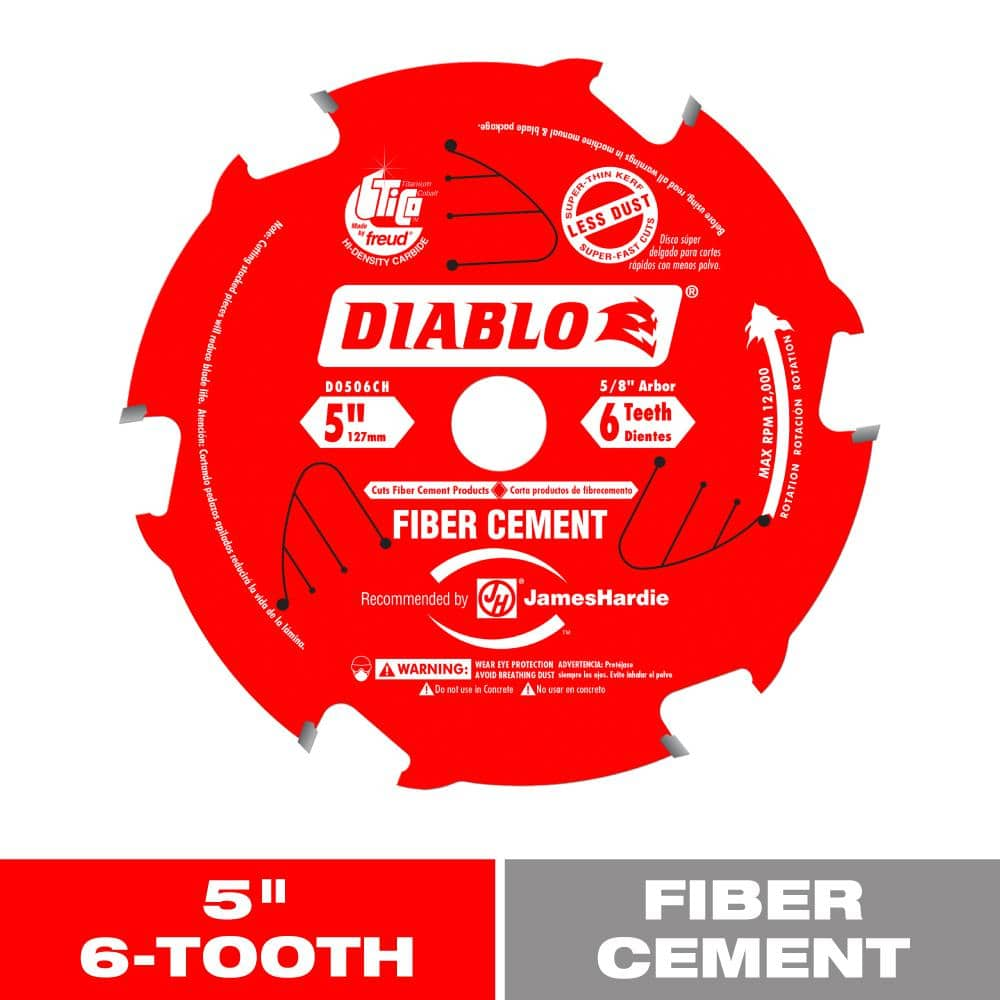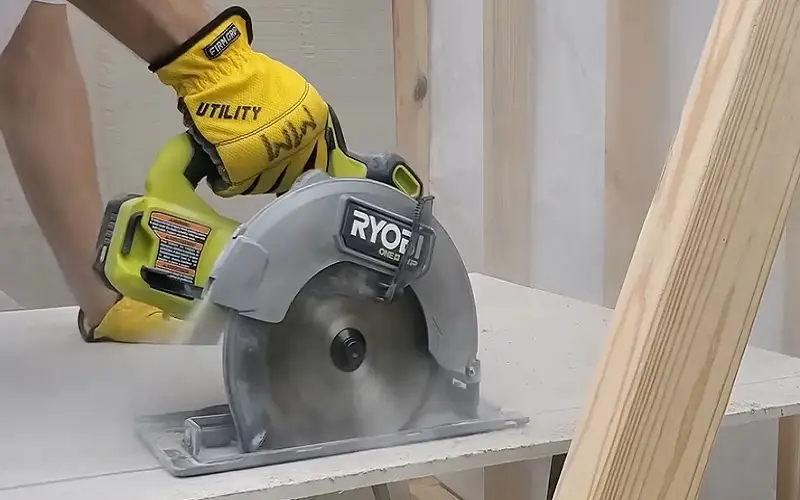Yes, you can cut Hardie board with a regular saw blade. Ensure the blade is designed for cutting fiber cement.
Hardie board, also known as fiber cement board, is a durable and versatile building material often used for siding, trim, and soffits. Cutting Hardie board requires the right tools and techniques to ensure a clean and precise cut.
While specialized blades are available for cutting fiber cement board, you can still use a regular saw blade if it is designed for cutting dense materials like cementitious products.
With the correct blade and proper safety precautions in place, you can achieve accurate cuts on Hardie board for your construction projects.
Contents
Understanding Saw Blades
Yes, you can cut Hardie board with a regular saw blade. However, it’s recommended to use a diamond-tipped blade, as it provides a smoother and cleaner cut.
Diamond-tipped blades are specifically designed for cutting through tough materials like Hardie board, ensuring efficient and precise results.
Understanding Saw Blades Different Types of Saw Blades There are several different types of saw blades available in the market, each designed for specific purposes. When it comes to cutting Hardie board, it’s essential to select the right blade for the job.
Let’s take a quick look at some of the different types of saw blades commonly used:
1. Crosscut Blade: This type of blade is designed to make smooth, accurate cuts across the wood grain. It features a large number of teeth with a flat-top grind. The crosscut blade is more suitable for cutting material like lumber and plywood.
2. Rip Blade: Unlike the crosscut blade, the rip blade is perfect for cutting material along the wood grain. It features fewer teeth, usually with a flat-top grind or a combination grind. The rip blade is ideal for cutting Hardie board.
3. Combination Blade: As the name suggests, this blade is a versatile option that can handle both crosscutting and ripping tasks. It features a combination of alternating flat-top and alternate top bevel teeth. The combination blade is suitable for cutting a variety of materials, including wood and Hardie board.
Features of a Regular Saw Blade A regular saw blade typically refers to a general-purpose blade that is commonly used in woodworking projects. While it may be tempting to use a regular saw blade to cut Hardie board, it’s important to understand the limitations.
Here are a few key features of a regular saw blade to consider:
1. Tooth Count: Regular saw blades usually have a higher tooth count, ranging from 24 to 40 teeth per inch. These teeth are designed for making smooth cuts in wood but may not be suitable for cutting Hardie board efficiently.
2. Tooth Grind: Regular saw blades have a flat-top grind, which is optimal for cutting wood fibers cleanly. However, when used on Hardie board, this type of blade can quickly wear out or become dull due to the board’s composition.
3. Tooth Material: Regular saw blades are typically made from high-speed steel (HSS) or carbide-tipped to ensure durability and extended cutting life. While these blades are effective for cutting wood, they may not withstand the abrasive nature of Hardie board.
In conclusion, while a regular saw blade may cut Hardie board, it is not the most efficient or recommended option. Investing in a specialized blade designed for cutting fiber cement materials like Hardie board will yield better results and prolong the life of your saw blade.
Remember to consider the tooth count, tooth grind, and tooth material when selecting a blade, as these factors play a crucial role in achieving clean and precise cuts.

Can You Use A Regular Saw Blade On Hardie Board?
When cutting Hardie board, the type of saw blade used plays a crucial role. Many DIY enthusiasts wonder if they can utilize a regular saw blade for this task.
Let’s explore the factors to consider and potential risks associated with using a regular saw blade on Hardie board.
Factors To Consider
- Material Composition: Hardie board is a fiber cement board that contains cement, sand, and cellulose fibers.
- Density: Hardie board is denser and harder than traditional wood materials, requiring a sturdy cutting tool.
- Blade Sharpness: A regular saw blade may not be sharp enough to effectively cut through Hardie board without causing damage.
- Blade Type: Carbide-tipped or diamond-tipped blades are recommended for cutting Hardie board due to their durability.
Potential Risks
- Blade Dulling: Using a regular saw blade may lead to rapid dulling, reducing its efficiency and requiring frequent replacements.
- Chipping or Cracking: Improper blades can cause chipping or cracking along the cut edges of the Hardie board.
- Safety Hazards: Inadequate blades might result in kickback or binding during cutting, posing safety risks to the operator.
- Inaccurate Cuts: Low-quality blades may produce imprecise cuts, affecting the overall finishing of the project.
Effortless Cutting Techniques
Choosing The Right Blade
When cutting Hardie board, selecting the proper blade is crucial. A diamond-tipped blade or a fiber cement blade will ensure clean and precise cuts.
These specialized blades are designed to withstand the hardness of the material without chipping or causing excessive wear and tear on the saw.
Preparing The Hardie Board
Prior to cutting, it’s essential to take the necessary precautions to prepare the Hardie board. Ensure that the board is clean and free of dust and debris that could hinder the cutting process. Additionally, marking the cut line with a pencil or using painter’s tape can aid in achieving accurate cuts.
Cutting Techniques For Straight Cuts
For straight cuts on Hardie board, it’s recommended to use a circular saw or a miter saw. When using a circular saw, adjusting the blade depth to approximately 1/4 inch deeper than the thickness of the board can help to prevent splintering.
Guiding the saw steadily along the marked line with a straightedge or fence will result in a clean and precise cut.
Cutting Techniques For Curved Cuts
When it comes to cutting curves in Hardie board, a jigsaw equipped with a fiber cement blade is the ideal tool.
By making relief cuts, it becomes easier to navigate the curves without compromising accuracy.
Take care to move the saw slowly and steadily along the curved line for smooth and precise results.
Tips For Clean And Accurate Cuts
- Wearing appropriate protective gear, such as a dust mask and safety goggles, is essential for personal safety during the cutting process.
- Supporting the Hardie board properly with sawhorses or a workbench can help prevent vibration and ensure stability while cutting. This will enhance the accuracy of the cuts.
- Using a dust containment system or working in a well-ventilated area is crucial to minimize the inhalation of harmful dust particles released during cutting.

Frequently Asked Questions For Can You Cut Hardie Board With A Regular Saw Blade
Do You Need A Special Blade To Cut Hardie Board?
You need a diamond-tipped blade or a carbide-tipped blade to cut Hardie board effectively.
Can You Cut Cement Board With A Regular Saw Blade?
Yes, you can cut cement board with a regular saw blade. However, it is recommended to use a carbide-tipped or diamond blade for a smoother and cleaner cut. Make sure to wear protective gear and use water to prevent dust.
What Is The Best Blade For Cutting Hardie Plank?
The best blade for cutting Hardie plank is a diamond or carbide-tipped blade. It provides clean and precise cuts, ensuring efficiency and accuracy.
Can You Cut Hardie Plank With A Circular Saw?
Yes, you can cut Hardie plank with a circular saw. Use a carbide-tipped blade for best results.
Conclusion
To sum up, cutting Hardie board with a regular saw blade is possible with precautions. Safety goggles and a dust mask are essential.
The right blade can make a difference in achieving clean cuts. Taking time and using proper techniques ensure a successful cutting process without damaging the board.

